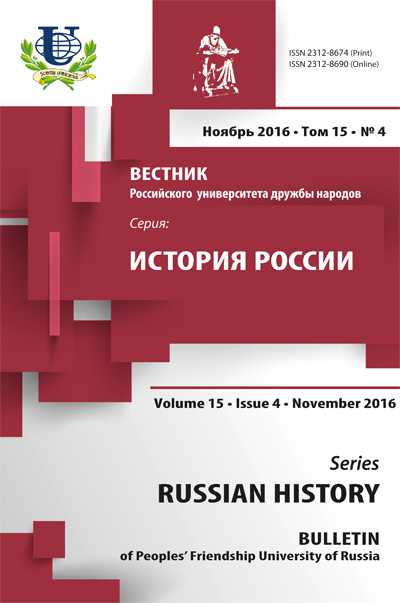FAIRS AS THE MECHANISM OF CULTURAL INTEGRATION IN MULTIETHNIC REGIONS: THE CASE OF FAIRS OF MIDDLE VOLGA IN THE 19TH CENTURY
- Authors: Krasnoshchyokov V.A.1
-
Affiliations:
- Volga Region State University of Service
- Issue: Vol 15, No 4 (2016)
- Pages: 46-56
- Section: ARTICLES
- URL: https://journals.rudn.ru/russian-history/article/view/15296
- ID: 15296
Cite item
Full text / tables, figures
Abstract
This article is a historical-cultural analysis of the role of fairs in the processes of cultural interaction in multi-ethnic regions in the 19th century as exemplified by the Middle Volga region. The article is based on a body of sources, which describe the local fairs, including reference books, statistical and economic data for the provinces of the Middle Volga and documents of ‘Economic notes to the general surveying of 1766-1861s’ stored at the Russian State Archive of Ancient Acts (RGADA). The author used historical cultural and methodological approaches, which enabled to estimate fairs as a cultural phenomenon and consider fair trade of the Middle Volga region in a historical perspective, to identify its genesis, and patterns of development in the history of the region. The analysis showed that the fairs served as a mechanism for cultural integration of the peoples of the Middle Volga region in the 19th century. As a part of everyday life, fairs were not only the leading form of trade and form of marketing communications on the basis of personal contacts in the Middle Volga in the 19th century, but also a major cultural phenomenon, a place where different social, professional and ethnic interactions were reflected in the real forms of everyday culture. The peoples of the region closely associated with the central provinces of Russia and with each other through fairs, which played the role of ethno-cultural integration mechanism and the transmission of values and forms of traditional culture in the Middle Volga. The economic and cultural ties between the inhabitants of the region, with a variety of beliefs, customs, habits and needs, expressed in the forms of fair trade, resulted in more homogeneous forms of economic activity, the spread in the daily use of the population of similar features of material and spiritual culture.
Keywords
About the authors
Vladimir Aleksandrovich Krasnoshchyokov
Volga Region State University of Service
Email: kulbiaka@yandex.ru
Gagarin St., 4, 445677, Tolyatti, Russia
References
Supplementary files















